CAPE CANAVERAL, Fla. (AP) – Mars appears to have flowing streams of salty water, at least in the summer, scientists reported Monday in a finding that could have major implications for the possibility of life on the planet.
Scientists in 2008 confirmed the existence of frozen water on Mars. But the latest observations from an instrument aboard NASA's Mars Reconnaissance Orbiter strongly support the longtime theory that salt water in liquid form flows down certain Martian slopes each summer, according to the researchers.
"Mars just got more interesting," NASA said via Twitter before holding a news conference at its Washington headquarters. The space agency called the results "a major science finding."
Because water is essential to life, the findings could boost the notion of life on Mars. The researchers said in the journal Nature Geoscience that further exploration is warranted to determine whether any microscopic life exists on the planet.
The evidence of flowing streams consists of dark, narrow streaks on the surface that tend to appear and grow during the warmest Martian months and fade the rest of the year.
Mars is extremely cold even in summer, and the streaks are in places where the temperature has climbed above minus-10 degrees Fahrenheit. But salt can lower the freezing point of water and melt ice.
The source of the water is still a mystery. Scientists noted it could be melting ice, an underground aquifer, water vapor from the thin Martian atmosphere, or some combination.
The Mars Reconnaissance Orbiter which has been circling the red planet since 2006.
The lead author of the research paper, Lujendra Ojha, is from Georgia Institute of Technology.
The dark streaks in this picture are up to a few hundred metres in length (Credit: NASA/ JPL/ University of Arizona)
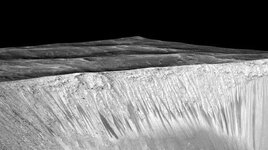
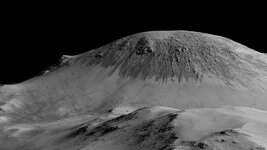
Analysed using a new technique, the satellite gathered data has found that the gullies contain salt minerals left over from briny water flowing down the slopes, and which are not present in the surrounding terrain.
The US based scientists involved in the research, which is published in the journal Nature Geoscience, say the "results strongly support the hypothesis that seasonal warm slopes are forming liquid water on contemporary Mars."
Mars is a cold barren desert today but is thought to have been warmer and wetter billions of years ago, with a thicker atmosphere, rivers and oceans.
Much of the planet's water is believed to have evaporated into space, but some remains locked in the polar icecaps and possibly in pockets underground.
It is not yet clear where the water found by this study is coming from.
One theory is that it may be absorbed from the atmosphere by the salt.
While others think it may be the result of melting ice just under the surface or seasonal discharges from local aquifers.
The discovery will heighten speculation about the probability of life being present on Mars.
Back on Earth, life has been found to exist in the most harsh of locations, provided water is there too.
The discovery also has implications for the chance of success for future human exploration of the planet, as the water could potentially be used for fuel and the survival of astronauts.
At four locations, Palikir Crater, Horowitz Crater, Hale Crater, and Coprates Chasma - a huge Martian canyon - they found evidence of RSL salt deposits.
The most common salts were magnesium perchlorate, magnesium chlorate and sodium perchlorate, all of which are consistent with flowing briny water.
Strong evidence Mars has streams of salt water in summertime - News - News Item
Scientists in 2008 confirmed the existence of frozen water on Mars. But the latest observations from an instrument aboard NASA's Mars Reconnaissance Orbiter strongly support the longtime theory that salt water in liquid form flows down certain Martian slopes each summer, according to the researchers.
"Mars just got more interesting," NASA said via Twitter before holding a news conference at its Washington headquarters. The space agency called the results "a major science finding."
Because water is essential to life, the findings could boost the notion of life on Mars. The researchers said in the journal Nature Geoscience that further exploration is warranted to determine whether any microscopic life exists on the planet.
The evidence of flowing streams consists of dark, narrow streaks on the surface that tend to appear and grow during the warmest Martian months and fade the rest of the year.
Mars is extremely cold even in summer, and the streaks are in places where the temperature has climbed above minus-10 degrees Fahrenheit. But salt can lower the freezing point of water and melt ice.
The source of the water is still a mystery. Scientists noted it could be melting ice, an underground aquifer, water vapor from the thin Martian atmosphere, or some combination.
The Mars Reconnaissance Orbiter which has been circling the red planet since 2006.
The lead author of the research paper, Lujendra Ojha, is from Georgia Institute of Technology.
The dark streaks in this picture are up to a few hundred metres in length (Credit: NASA/ JPL/ University of Arizona)


Analysed using a new technique, the satellite gathered data has found that the gullies contain salt minerals left over from briny water flowing down the slopes, and which are not present in the surrounding terrain.
The US based scientists involved in the research, which is published in the journal Nature Geoscience, say the "results strongly support the hypothesis that seasonal warm slopes are forming liquid water on contemporary Mars."
Mars is a cold barren desert today but is thought to have been warmer and wetter billions of years ago, with a thicker atmosphere, rivers and oceans.
Much of the planet's water is believed to have evaporated into space, but some remains locked in the polar icecaps and possibly in pockets underground.
It is not yet clear where the water found by this study is coming from.
One theory is that it may be absorbed from the atmosphere by the salt.
While others think it may be the result of melting ice just under the surface or seasonal discharges from local aquifers.
The discovery will heighten speculation about the probability of life being present on Mars.
Back on Earth, life has been found to exist in the most harsh of locations, provided water is there too.
The discovery also has implications for the chance of success for future human exploration of the planet, as the water could potentially be used for fuel and the survival of astronauts.
At four locations, Palikir Crater, Horowitz Crater, Hale Crater, and Coprates Chasma - a huge Martian canyon - they found evidence of RSL salt deposits.
The most common salts were magnesium perchlorate, magnesium chlorate and sodium perchlorate, all of which are consistent with flowing briny water.
Strong evidence Mars has streams of salt water in summertime - News - News Item
Last edited:




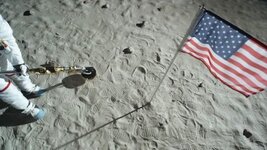




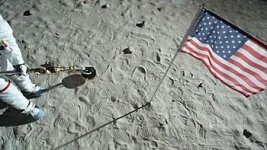
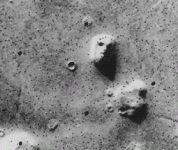
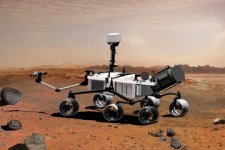
 ? Hmmmm, doesn't seem too plausible from a common sense stand point.
? Hmmmm, doesn't seem too plausible from a common sense stand point. 

